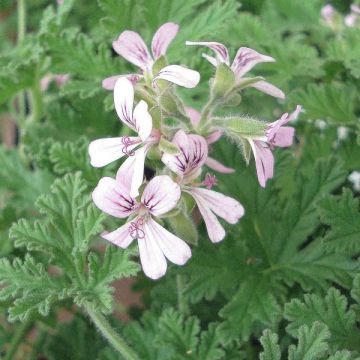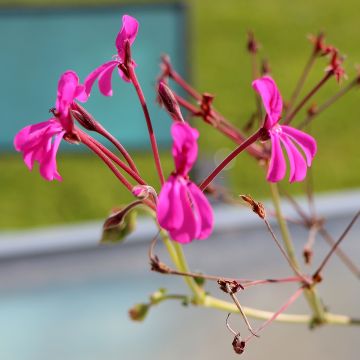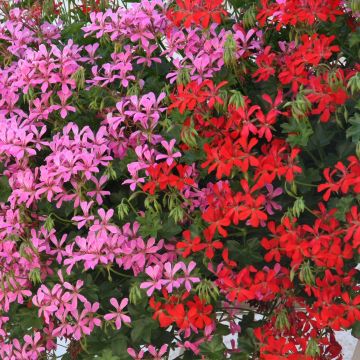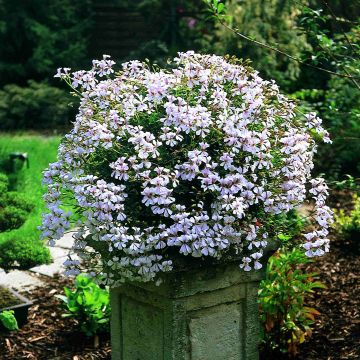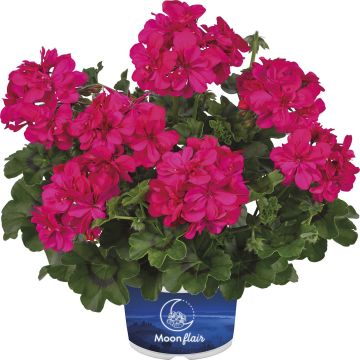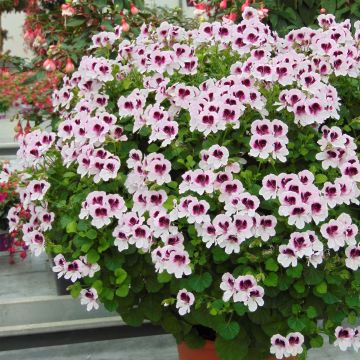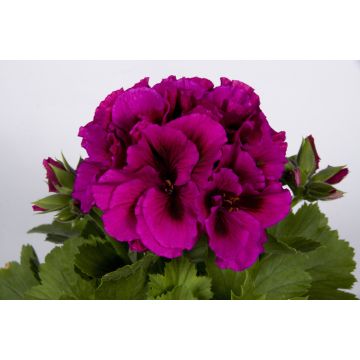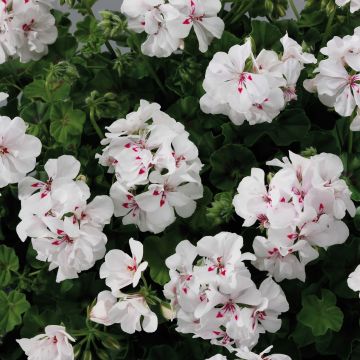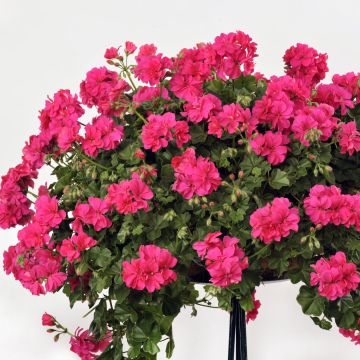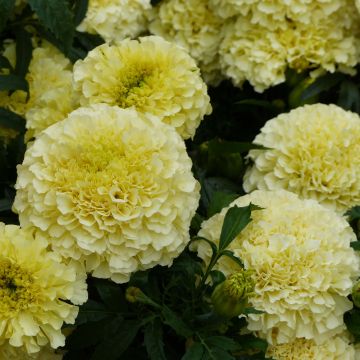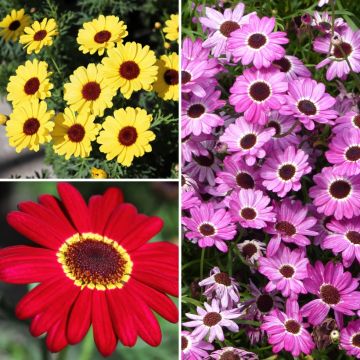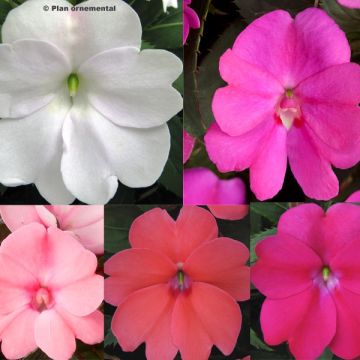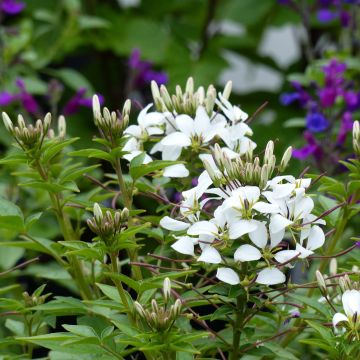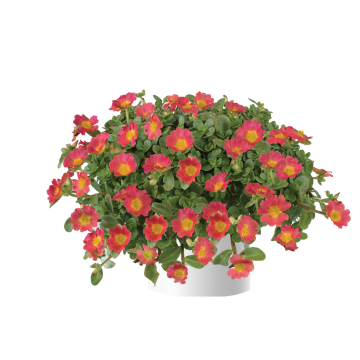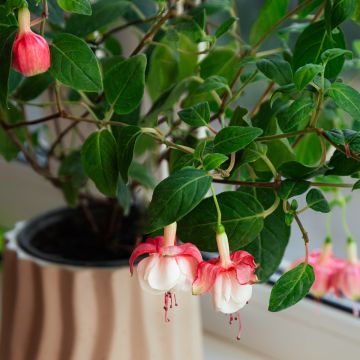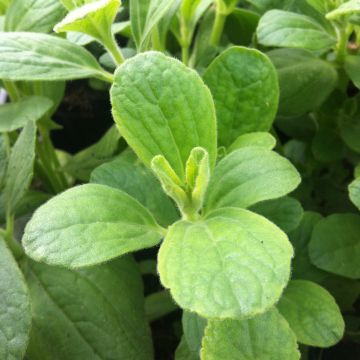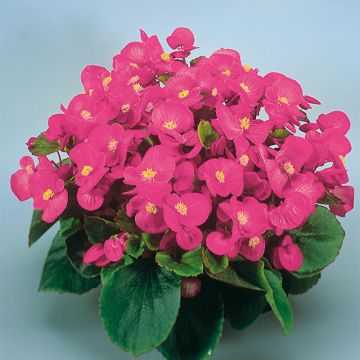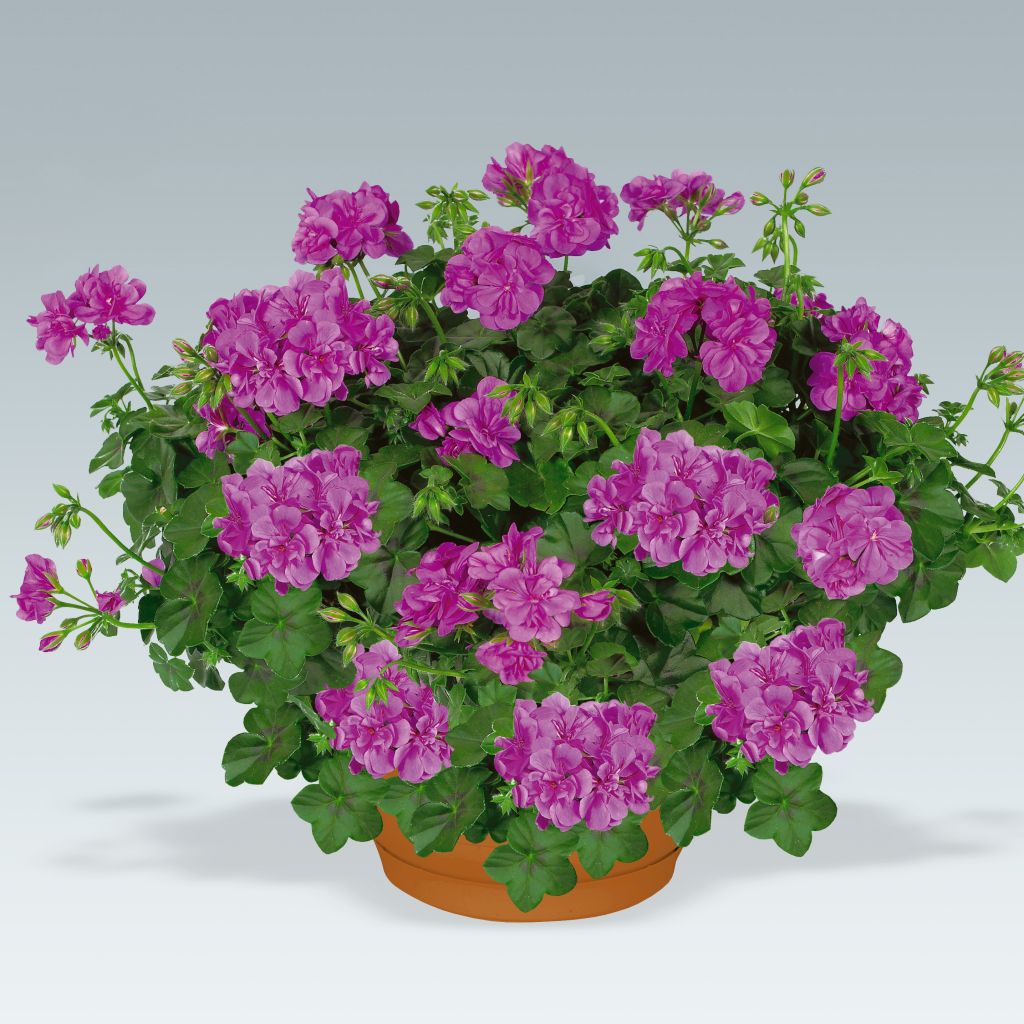

Pelargonium peltatum Amelit
Pelargonium peltatum Amelit
Pelargonium peltatum Amelit
Geranium, Storksbill
The young plants have taken well and the flowers are huge.
BABETH, 12/10/2024
This item cannot be shipped to the selected country
Delivery charge from €5.90
Delivery charge from €5.90
Delivery to Corse prohibited
More information
Schedule delivery date,
and select date in basket
This plant carries a 6 months recovery warranty
More information
We guarantee the quality of our plants for a full growing cycle, and will replace at our expense any plant that fails to recover under normal climatic and planting conditions.
From €5.90 for pickup delivery and €6.90 for home delivery
Express home delivery from €8.90.
From €5.90 for pickup delivery and €6.90 for home delivery
Express home delivery from €8.90.
Delivery to Corse prohibited: UE law prohibits the import of this plant from mainland France to Corse as part of the fight against Xylella fastidiosa. Please accept our sincere apologies.
More information

Does this plant fit my garden?
Set up your Plantfit profile →
Description
The Ivy Geranium 'Amelit' forms a true ball of colour, composed of semi-double flowers, dark lilac or amethyst violet, gathered in round clusters, which mingle with a compact and well-branched foliage, with a perfect semi-trailing habit. This very beautiful plant also has bright, light green foliage. A tried and tested old variety, easy to grow in flower pots, hanging baskets or borders.
Ivy geraniums are descended from Pelargonium peltatum, a plant from the Geraniaceae family native to the coast of the Cape Province in South Africa. This species has the particularity of forming creeping or spreading stems, with foliage resembling that of ivy. The hybrids that we know as ivy geraniums show the same trailing habit with more prolific flowering. The 'Amelit' variety, which won an award in 1962, flowers fairly early, from June to September-October. The plant is fast-growing, vigorous and compact, forming a round, trailing mound 35 cm (13.8 in) high and 50-60 cm (19.7 - 23.6 in) in diameter, with numerous flexible, green stems and small, bright green, five-lobed, pointed foliage. The leaves are umbrella-shaped, circular, slightly fleshy and aromatic. The semi-double to double flowers are grouped in large terminal clusters, 5 to 7 cm (2 - 2.8 in) across.
Ivy-leaved geraniums are generous, undemanding plants, ideal for adorning pots for most of the year. They cascade down from window boxes and balconies, their flowers creating round, colourful masses that blend together or enhance other plants, whether they are trailing like purple or chocolate-leaved ipomoeas (Ipomoea 'Illusion Midnight Lace', Ipomoea 'Sweet Heart Purple') or upright like zonal pelargoniums, petunias, gauras or fuchsias. The 'Amelit' variety is a trouble-free plant, to be grown alone or combined with with blue, violet or pale yellow calibrachoas, bacopas, nemesias, fragrant alyssums for fragrance, among others...
Note: Please be aware that our young plug plants are professional products intended for experienced gardeners: upon receipt, transplant and store them under cover (conservatory, greenhouse, frame...) at a temperature above 14°C/57.2°F for a few weeks before being installed outdoors once the risk of frost has passed.
Report an error about the product description
Pelargonium peltatum Amelit in pictures
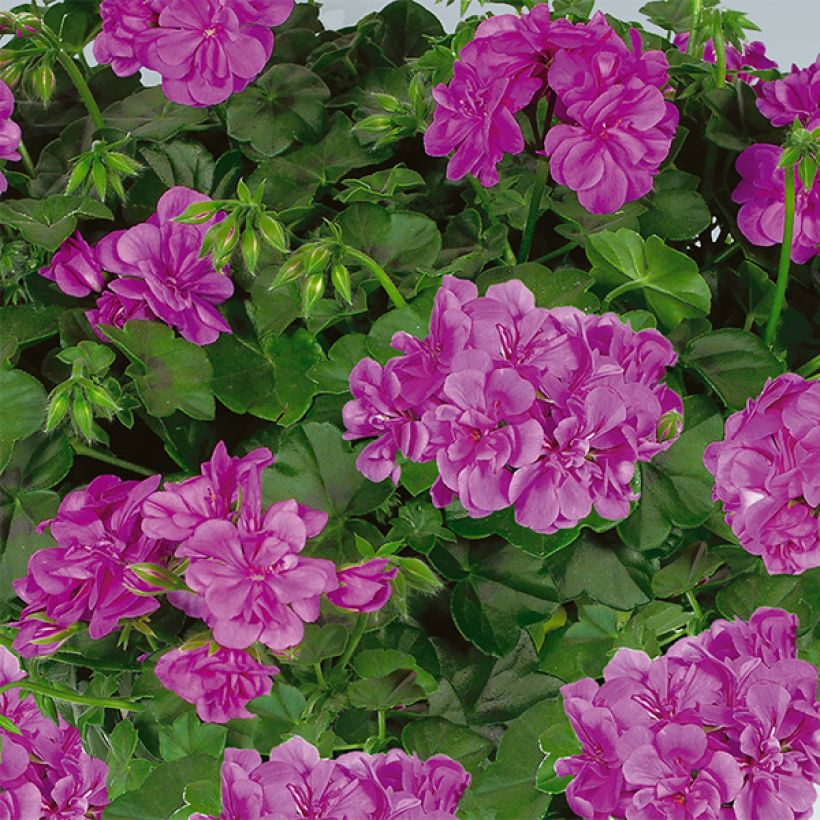

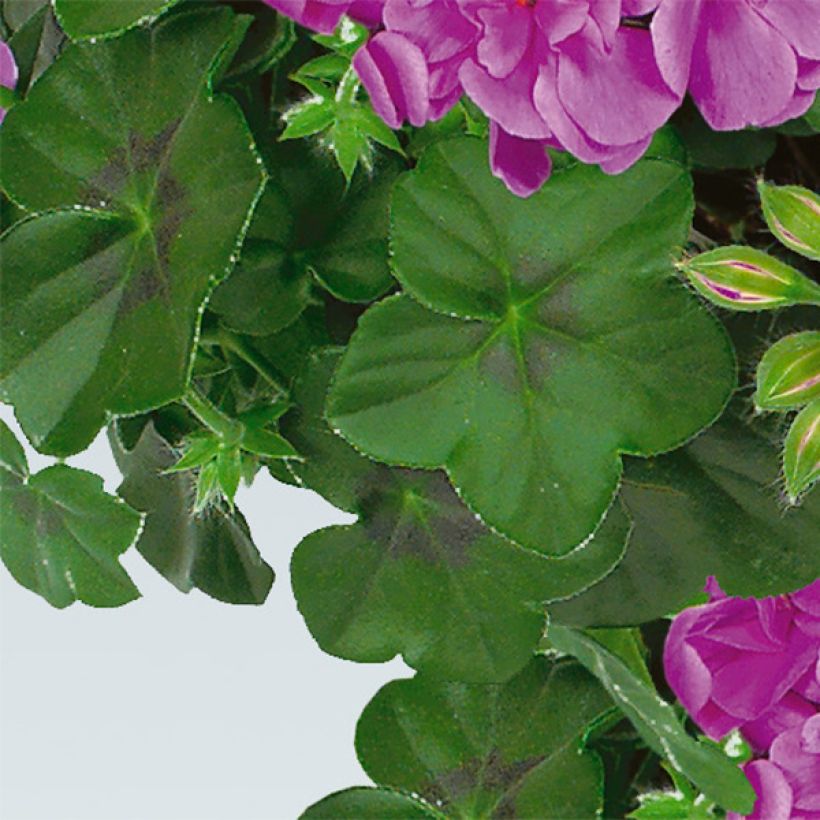

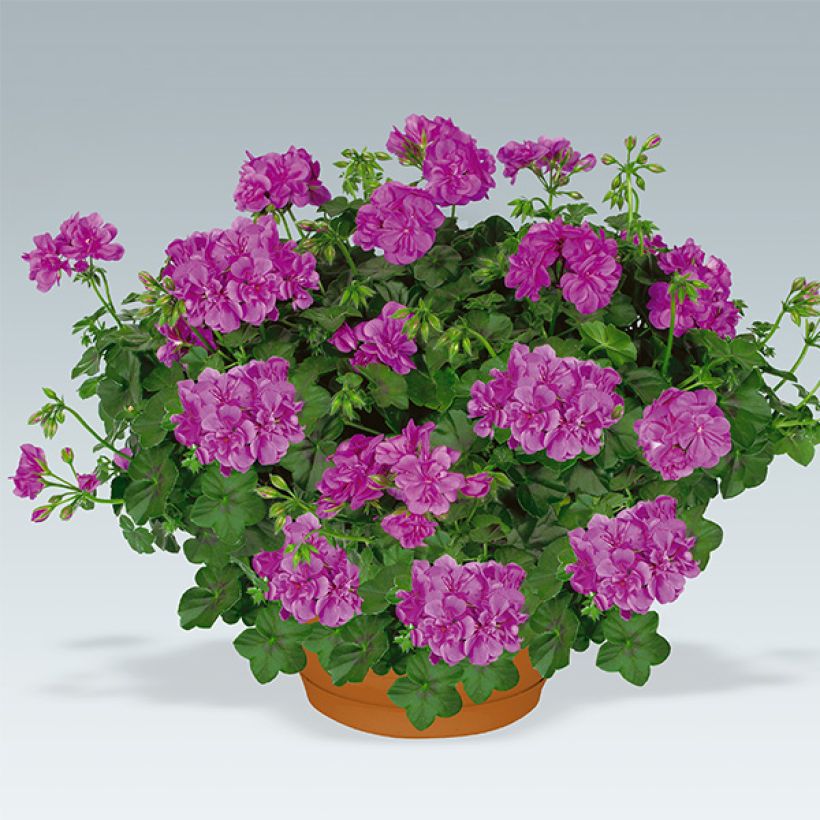

Flowering
Foliage
Plant habit
Botanical data
Pelargonium
peltatum
Amelit
Geraniaceae
Geranium, Storksbill
Cultivar or hybrid
Other Pelargonium - Geranium
Planting and care
You can plant your ivy geraniums in the ground or in pots. If you want to plant them in the ground, wait until the last heavy frosts have passed. In the meantime, you can start them off in a pot in a warm and bright place to speed up their growth.
The geraniums will bloom from June to October. Plant them in a sunny or partially shaded location sheltered from the wind. They need a light and humus-rich but, above all, well-drained soil. Do not water them too much at the beginning of the growing season as they are sensitive to excess moisture. They tolerate drought well, but will need regular watering during hot summer weather. Geraniums are sensitive to frost (minimum -2°C/28.4°F).
Fast-growing and with masses of flowers they are nutrient-demanding plants. We recommend feeding them with a liquid fertilizer for Surfinias once or twice a week during the growing season. Remove faded flowers and dry leaves as they appear to keep them looking beautiful and prolong flowering.
Planting period
Intended location
Care
-
, onOrder confirmed
Reply from on Promesse de fleurs
Plug plants - Annuals
Haven't found what you were looking for?
Hardiness is the lowest winter temperature a plant can endure without suffering serious damage or even dying. However, hardiness is affected by location (a sheltered area, such as a patio), protection (winter cover) and soil type (hardiness is improved by well-drained soil).

Photo Sharing Terms & Conditions
In order to encourage gardeners to interact and share their experiences, Promesse de fleurs offers various media enabling content to be uploaded onto its Site - in particular via the ‘Photo sharing’ module.
The User agrees to refrain from:
- Posting any content that is illegal, prejudicial, insulting, racist, inciteful to hatred, revisionist, contrary to public decency, that infringes on privacy or on the privacy rights of third parties, in particular the publicity rights of persons and goods, intellectual property rights, or the right to privacy.
- Submitting content on behalf of a third party;
- Impersonate the identity of a third party and/or publish any personal information about a third party;
In general, the User undertakes to refrain from any unethical behaviour.
All Content (in particular text, comments, files, images, photos, videos, creative works, etc.), which may be subject to property or intellectual property rights, image or other private rights, shall remain the property of the User, subject to the limited rights granted by the terms of the licence granted by Promesse de fleurs as stated below. Users are at liberty to publish or not to publish such Content on the Site, notably via the ‘Photo Sharing’ facility, and accept that this Content shall be made public and freely accessible, notably on the Internet.
Users further acknowledge, undertake to have ,and guarantee that they hold all necessary rights and permissions to publish such material on the Site, in particular with regard to the legislation in force pertaining to any privacy, property, intellectual property, image, or contractual rights, or rights of any other nature. By publishing such Content on the Site, Users acknowledge accepting full liability as publishers of the Content within the meaning of the law, and grant Promesse de fleurs, free of charge, an inclusive, worldwide licence for the said Content for the entire duration of its publication, including all reproduction, representation, up/downloading, displaying, performing, transmission, and storage rights.
Users also grant permission for their name to be linked to the Content and accept that this link may not always be made available.
By engaging in posting material, Users consent to their Content becoming automatically accessible on the Internet, in particular on other sites and/or blogs and/or web pages of the Promesse de fleurs site, including in particular social pages and the Promesse de fleurs catalogue.
Users may secure the removal of entrusted content free of charge by issuing a simple request via our contact form.
The flowering period indicated on our website applies to countries and regions located in USDA zone 8 (France, the United Kingdom, Ireland, the Netherlands, etc.)
It will vary according to where you live:
- In zones 9 to 10 (Italy, Spain, Greece, etc.), flowering will occur about 2 to 4 weeks earlier.
- In zones 6 to 7 (Germany, Poland, Slovenia, and lower mountainous regions), flowering will be delayed by 2 to 3 weeks.
- In zone 5 (Central Europe, Scandinavia), blooming will be delayed by 3 to 5 weeks.
In temperate climates, pruning of spring-flowering shrubs (forsythia, spireas, etc.) should be done just after flowering.
Pruning of summer-flowering shrubs (Indian Lilac, Perovskia, etc.) can be done in winter or spring.
In cold regions as well as with frost-sensitive plants, avoid pruning too early when severe frosts may still occur.
The planting period indicated on our website applies to countries and regions located in USDA zone 8 (France, United Kingdom, Ireland, Netherlands).
It will vary according to where you live:
- In Mediterranean zones (Marseille, Madrid, Milan, etc.), autumn and winter are the best planting periods.
- In continental zones (Strasbourg, Munich, Vienna, etc.), delay planting by 2 to 3 weeks in spring and bring it forward by 2 to 4 weeks in autumn.
- In mountainous regions (the Alps, Pyrenees, Carpathians, etc.), it is best to plant in late spring (May-June) or late summer (August-September).
The harvesting period indicated on our website applies to countries and regions in USDA zone 8 (France, England, Ireland, the Netherlands).
In colder areas (Scandinavia, Poland, Austria...) fruit and vegetable harvests are likely to be delayed by 3-4 weeks.
In warmer areas (Italy, Spain, Greece, etc.), harvesting will probably take place earlier, depending on weather conditions.
The sowing periods indicated on our website apply to countries and regions within USDA Zone 8 (France, UK, Ireland, Netherlands).
In colder areas (Scandinavia, Poland, Austria...), delay any outdoor sowing by 3-4 weeks, or sow under glass.
In warmer climes (Italy, Spain, Greece, etc.), bring outdoor sowing forward by a few weeks.


































